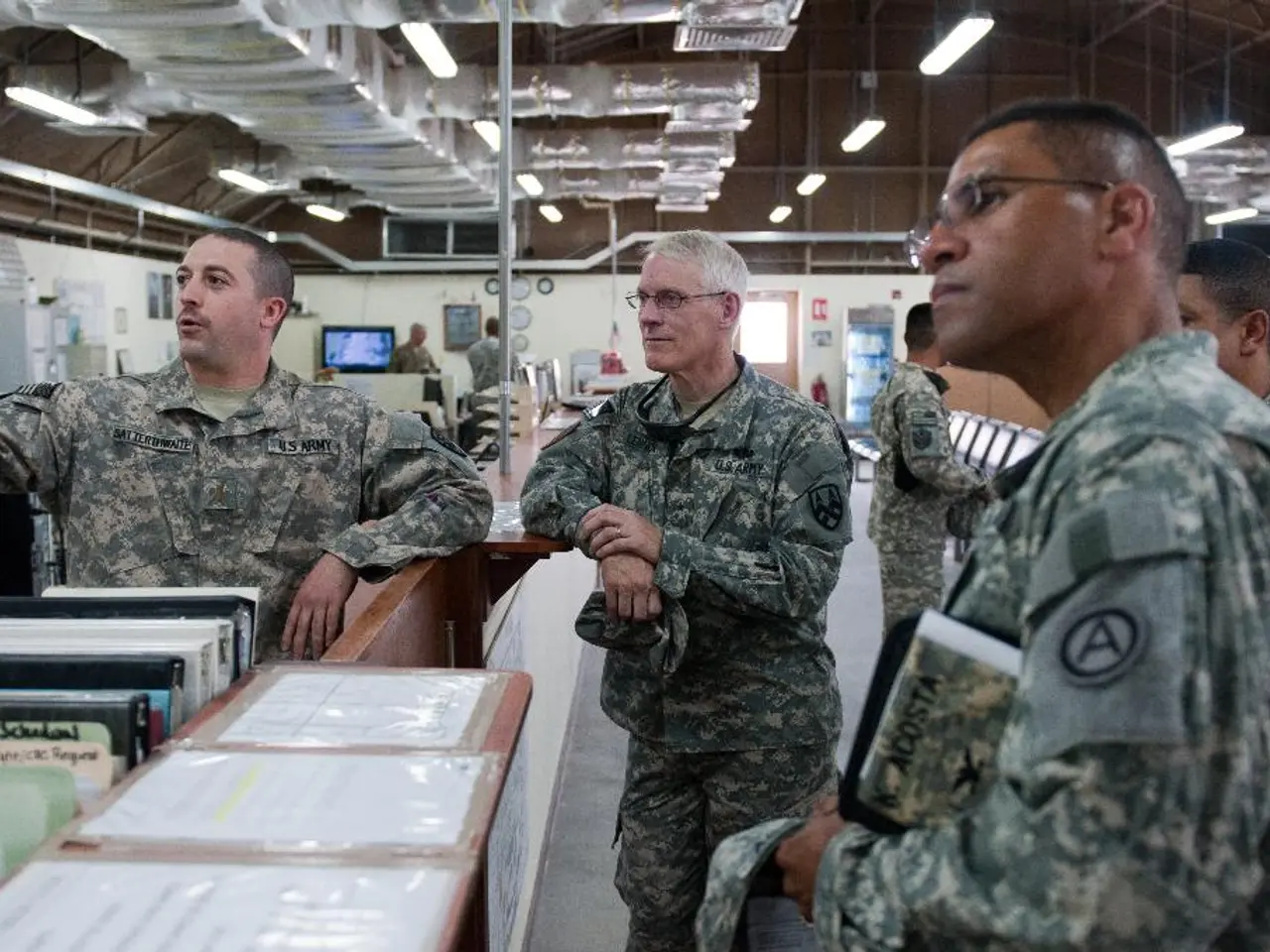American diplomat tours relief center in Gaza managed by Israeli-supported organization, frequently targeted by critics
The current situation in Gaza is marked by a severe food crisis, with over half the population affected by widespread famine and starvation. Two out of three famine thresholds have been reached, including plummeting food consumption and acute malnutrition, though famine has not been officially declared as deaths directly from malnutrition remain challenging to verify. Over 20,000 children have been treated for acute malnutrition, with dozens of deaths reported, and infrastructure destruction exacerbates the crisis.
At the heart of the aid distribution system in Gaza is the Israeli-backed American contractor, the Gaza Humanitarian Foundation (GHF). The GHF has delivered over 100 million meals since it began operations in May. However, the arrangement has been criticized internationally amid allegations of violence and controversy surrounding aid access and distribution fairness.
Recent reports suggest that over 1,000 people have been killed by Israeli fire since May while seeking aid in the territory. Israel's military has stated that it only fires warning shots at people who approach its forces and denies any responsibility for the high death toll near the GHF sites. Officials at Nasser Hospital in southern Gaza reported receiving the bodies of 13 people who were killed while trying to get aid, including near the site visited by U.S. officials.
Inside the GHF sites, a frenzied fee-for-all occurs, with weaker and more vulnerable people coming away with nothing, according to Human Rights Watch. The organisation has also criticised the Israeli-backed aid system, stating that it is nearly impossible for Palestinians to follow instructions, stay safe, and receive aid due to ongoing military operations.
The GHF's exclusive role in managing food aid distribution under close Israeli oversight was established to address concerns that Hamas was previously diverting aid for its own benefit, including financially supporting fighters. However, this arrangement has been met with criticism, with many questioning the fairness of the distribution system and the impact it has on the most vulnerable members of the population.
The crisis has been further exacerbated by Israel's military offensive against Hamas, which has lasted nearly 22 months and has made it difficult to safely deliver food to starving people. Thousands of Palestinians gather near GHF sites at night before they open, and Israeli forces control their movements by opening fire toward them.
Amidst this ongoing conflict, the international community has called for an end to settler violence and for Hamas to lay down its arms in Gaza and release the remaining hostages. Germany's foreign minister, Johann Wadephul, recently condemned settler violence and made these calls during a visit to a Palestinian Christian village in the occupied West Bank that has seen recent attacks by Israeli settlers.
In a bid to address mounting global criticism, the Israeli military announced a "tactical pause" and humanitarian corridors to allow limited UN and aid agency convoys to reach those in need. The U.S. President Donald Trump's Mideast envoy, Steve Witkoff, also visited a food distribution site in Gaza operated by the GHF, though it remains to be seen whether these steps will be enough to alleviate the ongoing humanitarian crisis in the region.
[1] Reuters [2] Al Jazeera [3] The New York Times [4] Human Rights Watch
- The crisis in Gaza, marked by a severe food crisis and widespread famine, has escalated due to political tensions and violent conflict, leading to accusations of bias and unaffordable access of aid distribution in war-and-conflicts-related news and crime-and-justice sections.
- Amidst the ongoing political standoff, Israeli military operations and settler violence have presented multiple challenges for the delivery of humanitarian aid, creating general-news headlines and sparking human rights concerns, as pointed out by Human Rights Watch and various media outlets such as Reuters, Al Jazeera, and The New York Times.







